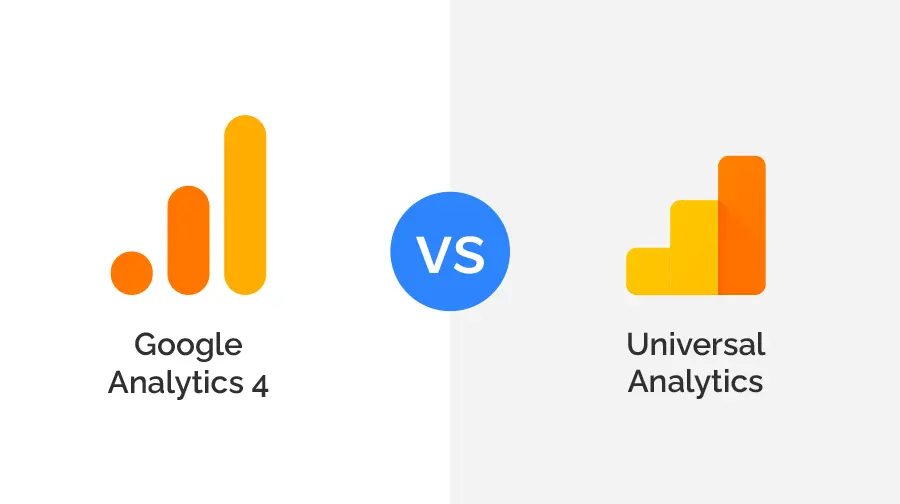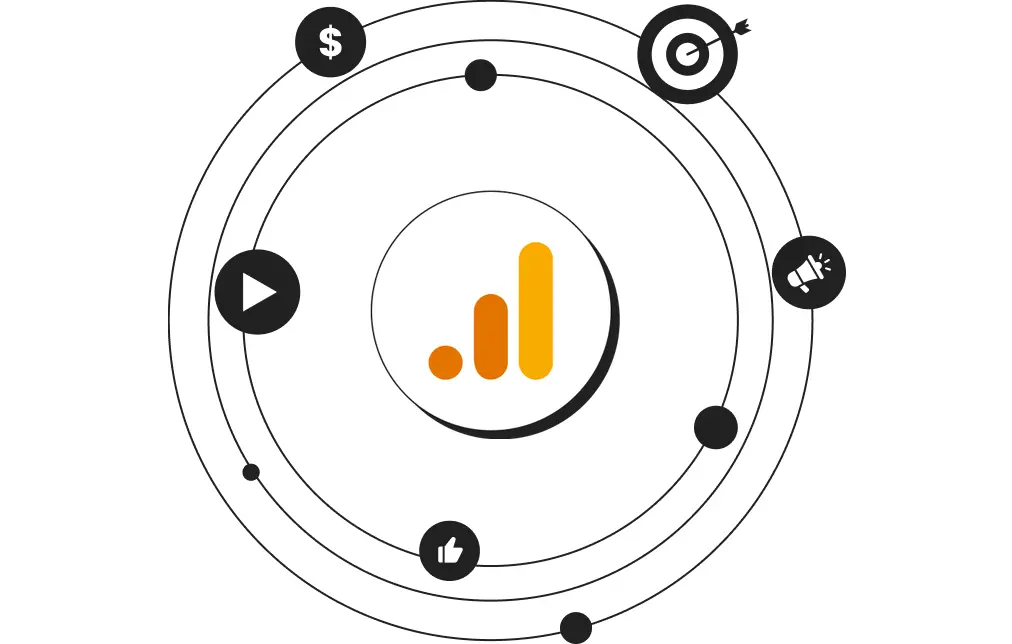Since the sunset of Universal Analytics (UA) in mid-2023, Google Analytics 4 (GA4) has become the default platform. But even in 2025, many users are still confused about how GA4 works, how it differs from UA, and how to migrate properly.
This article explains the key differences, benefits, and actionable tips to help you confidently navigate GA4 and make data-driven decisions.
🔄 Key Differences Between GA4 and Universal Analytics
1. Data Model: Events vs Sessions
Universal Analytics used a session-based model, which grouped user interactions into sessions. GA4, however, is built on an event-based model, where every interaction (like a pageview, click, or scroll) is tracked as an individual event. This allows for more granular and flexible data collection.
2. Cross-Platform Tracking
In UA, tracking across websites and mobile apps required separate properties and often third-party tools. GA4 is designed for cross-platform tracking by default, allowing you to track users across websites, mobile apps, and devices in a unified way.
3. Bounce Rate vs Engagement Rate
Bounce Rate was a key metric in UA, but it often led to misleading interpretations. GA4 replaces it with Engagement Rate, which measures how many users actively engage with your site (by spending more than 10 seconds, triggering events, or visiting multiple pages). This gives a clearer picture of real user behavior.
4. User Tracking & Privacy
UA primarily used cookies and Client IDs to track users. GA4 combines User ID tracking (for logged-in users) with machine learning models to fill in data gaps. It’s also designed to be more privacy-friendly and adaptable to a cookieless future.
5. Customization & Reporting
GA4 focuses on custom event tracking and flexible reporting. Unlike UA's rigid dashboards, GA4 lets you build Exploration Reports with drag-and-drop tools to create funnels, paths, cohorts, and more—ideal for advanced analysis.
6. IP Anonymization & Compliance
In Universal Analytics, IP anonymization was optional. In GA4, it is enabled by default to ensure better GDPR and privacy compliance, making GA4 more future-proof in terms of data protection regulations.
7. Data Retention Policies
Universal Analytics allowed storing user data for up to 50 months. In contrast, GA4 limits this to 14 months, with a default of 2 months. This aligns with privacy-first policies but requires you to regularly export data if you need long-term insights.
✅ Benefits of GA4 in 2025
Future-Proof Tracking: Designed for a world with stricter privacy laws and less cookie dependence.
Smarter Insights: Uses AI-powered insights and predictions to uncover trends, churn risk, and purchase probabilities.
Event-Driven Flexibility: Better customization of goals, funnels, and event tracking without needing additional code.
Deeper User Understanding: Built-in support for tracking across apps and websites helps analyze complete user journeys.
Improved ROI Tracking: Great for marketing teams tracking campaign performance across multiple platforms and devices.
🔁 Migration Tips for Businesses Still Catching Up
If you haven’t fully embraced GA4 yet, here are key steps to make the transition smoother:
1. Run GA4 and UA in Parallel (if data is archived)
If you were previously collecting data in UA, check if you have exported it. Compare reports side-by-side to understand how GA4 handles things differently.
2. Set Up Custom Events and Conversions
Use Google Tag Manager or GA4’s native event setup to track key interactions like:
Button clicks
Form submissions
Video views
Scroll depth
3. Recreate Your Goals in GA4
Since UA goals don’t carry over, rebuild them using GA4’s conversion events.
4. Use Explorations for Reporting
GA4’s Explorations tab allows you to create advanced funnels, path analysis, and segment reports that go beyond what UA could do.
5. Train Your Team
If your team is still used to UA, schedule training to help them navigate GA4’s new interface and capabilities.
📝 Final Thoughts
Google Analytics 4 isn’t just a redesign of Universal Analytics—it’s a complete shift in how user data is tracked and analyzed. While the learning curve is real, the benefits are worth the effort. GA4 gives you deeper insights, stronger privacy protection, and the flexibility needed to adapt in an ever-changing digital landscape.
In 2025, if you’re still unsure about GA4, the time to dive in is now. The longer you wait, the more historical data and insights you’ll miss out on.






